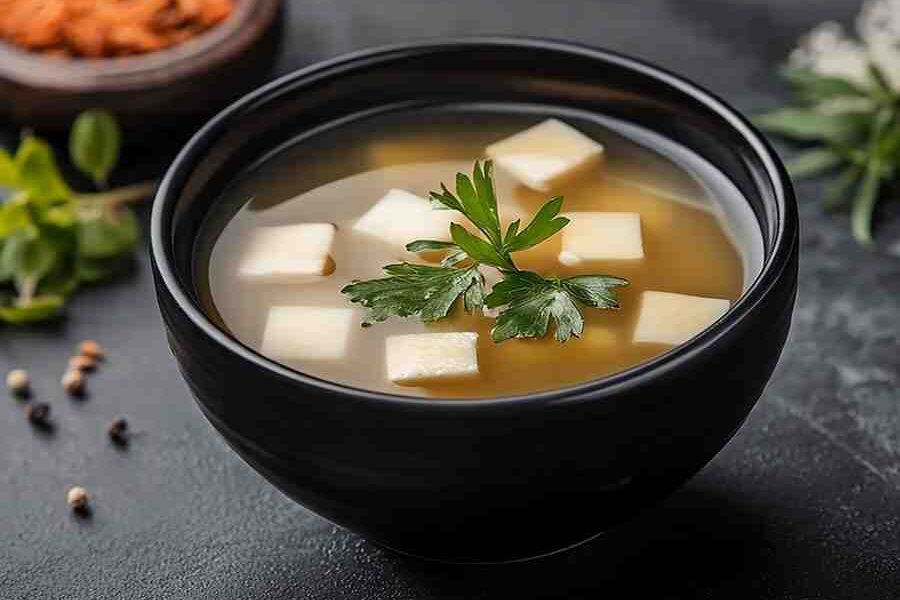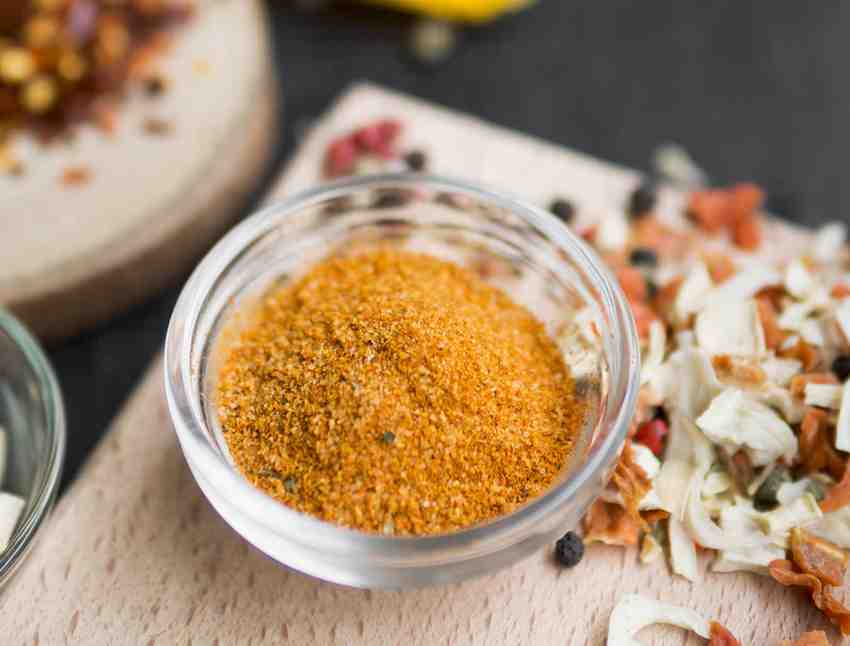Shichimi Togarashi, or Japanese Seven-Spice Mix, is a vibrant and flavorful seasoning blend that has been a staple in Japanese cuisine for centuries. This unique mix brings together a blend of spicy, earthy, and umami flavors, enhancing dishes like soups, rice, and noodles with its distinct taste and texture.
Origins and Cultural Significance
Shichimi Togarashi, Japan’s beloved seven-spice blend, dates back to the Edo period (1603-1868). Originally sold in herbal shops for its warming and digestive benefits, it’s now widely available across Japan, with regional variations. This balanced, mildly spicy mix adds depth to Japanese dishes without overpowering them.
- Origins: Edo period, valued in herbal medicine
- Health Benefits: Warming, aids digestion
- Availability: Common in markets and stores, regionally varied
- Culinary Use: Adds gentle heat and depth to dishes
Key Ingredients in Shichimi Togarashi
The classic Shichimi Togarashi blend typically includes seven ingredients, each contributing unique flavors and textures. While regional variations exist, the essential components are relatively consistent across Japan.
Essential Ingredients and Their Flavors
- Red Chili Pepper: Provides the primary heat in Shichimi Togarashi, balancing the umami and citrus flavors with a spicy kick.
- Black and White Sesame Seeds: Adds nuttiness and a slight crunch, enhancing both flavor and texture.
- Dried Orange Peel: Brings a bright, citrusy aroma that contrasts with the earthier spices.
- Sansho Pepper: A unique Japanese pepper similar to Sichuan pepper, adding a numbing, peppery zing.
- Nori (Seaweed Flakes): Introduces a subtle umami and ocean-like flavor, which complements the other ingredients.
- Ginger Powder: Adds warmth and depth, rounding out the spicy and savory elements.
- Poppy or Hemp Seeds (optional): Adds texture and a mild, earthy flavor, though it’s optional in some versions.
Optional Ingredients and Customization
Depending on the region and personal preference, some variations of Shichimi Togarashi may include additional ingredients, like shiso (Japanese basil) or garlic. Adding these ingredients allows for customization, creating a blend that’s either more herbaceous, earthy, or spicy. If you’re making Shichimi Togarashi at home, you can experiment with these additions to create a unique twist.

How to Make Shichimi Togarashi at Home
Creating Shichimi Togarashi at home is simple and rewarding, allowing you to control the flavor balance and ingredient freshness. Follow this step-by-step guide for a perfect homemade Shichimi Togarashi blend.
Step-by-Step Recipe
Step 1: Gather Fresh, Quality Ingredients
Start by gathering your ingredients. Freshness matters, as it enhances the final flavor of your blend. For optimal flavor, use high-quality dried chili peppers, sesame seeds, and seaweed flakes. You can find many of these ingredients at Asian grocery stores or online.
Step 2: Toast the Sesame Seeds and Nori
Toast black and white sesame seeds in a dry skillet over low heat for about 2–3 minutes, stirring constantly until they release a nutty aroma. Be careful not to burn them. If using nori sheets, lightly toast them in the skillet for a few seconds until they become crisp, then crumble them into small flakes.
Step 3: Grind the Chili Pepper and Sansho Pepper
Using a spice grinder or mortar and pestle, grind the dried chili pepper and sansho pepper into a fine powder. This step is crucial for achieving an even distribution of heat and flavor throughout the blend.
Step 4: Mix All Ingredients
In a mixing bowl, combine the ground chili and sansho pepper with the toasted sesame seeds, nori flakes, dried orange peel, ginger powder, and any optional ingredients. Stir well to ensure an even blend of flavors and textures.
Step 5: Store Properly for Freshness
Transfer your Shichimi Togarashi blend into an airtight container, preferably a small glass jar. Store it in a cool, dark place to maintain its freshness. For the best flavor, use within three to six months.
Ingredient Substitutions for Custom Blends
If you don’t have all the ingredients, you can make a few substitutions. Cayenne pepper or crushed red pepper flakes can replace red chili pepper, and Sichuan pepper can stand in for sansho pepper. These alternatives allow you to enjoy the essence of Shichimi Togarashi even if some ingredients are hard to find.
Tips for Perfecting Your Shichimi Togarashi
To make your Shichimi Togarashi truly exceptional, consider the following tips:
- Use Fresh Ingredients: Fresh spices and seeds make a noticeable difference in flavor. Avoid pre-ground spices whenever possible, as they lose potency over time.
- Toast for Extra Flavor: Toasting sesame seeds and nori intensifies their flavors. Be sure to toast them on low heat to prevent burning.
- Adjust the Heat: Control the level of spiciness by adjusting the amount of chili pepper. If you prefer milder flavors, reduce the chili pepper or use a milder variety like ancho chili.
- Experiment with Variations: Feel free to add a few optional ingredients, such as shiso or garlic powder, for a personalized twist on the traditional blend.
- Store Properly: Keep Shichimi Togarashi in a sealed, airtight container in a cool, dark place. This helps preserve its flavor and freshness.
Flavor Profile and Culinary Uses of Shichimi Togarashi
Shichimi Togarashi offers a complex blend of flavors, combining spicy, nutty, citrusy, and umami notes. This unique balance makes it versatile, adding depth and subtle heat to many Japanese dishes. From enhancing soups and rice to adding a kick to grilled meats, Shichimi Togarashi has endless uses in both traditional and modern cooking.
Traditional Uses in Japanese Cuisine
In Japanese cuisine, Shichimi Togarashi is a popular table condiment, similar to how salt or pepper is used in Western cultures. Here are a few classic ways to incorporate it:
- Soups and Broths: A sprinkle of Shichimi Togarashi over ramen, miso soup, or udon elevates the dish with a hint of heat and complexity. The chili and sansho peppers add warmth, while the sesame and nori provide subtle texture and umami.
- Rice Dishes: It’s common to add Shichimi Togarashi to rice dishes, whether on steamed rice, donburi (rice bowls), or onigiri (rice balls). The seasoning not only adds flavor but also gives rice a visually appealing speckled look.
- Grilled Meats and Fish: In Japanese grilling, or “yakimono,” Shichimi Togarashi serves as a flavorful rub or finishing touch on grilled items like chicken, beef, or fish. It enhances the savory flavors of the protein and adds a spicy depth.

Non-Traditional and Creative Uses
While Shichimi Togarashi shines in traditional Japanese dishes, it also works wonderfully in other cuisines and creative culinary applications:
- Salads: Sprinkle Shichimi Togarashi over green salads or use it in vinaigrettes to add a kick and a hint of umami.
- Roasted Vegetables: Toss root vegetables like carrots, potatoes, or Brussels sprouts with Shichimi Togarashi before roasting. The spices bring out the natural sweetness of the vegetables and add a subtle heat.
- Popcorn: For a fun twist, mix Shichimi Togarashi with sea salt and sprinkle over freshly popped popcorn. The seasoning adds a spicy, savory flavor that pairs well with the light, crunchy texture of popcorn.
- Marinades and Sauces: Add a teaspoon or two to marinades for meats, tofu, or seafood, or stir it into dipping sauces for a hint of heat and depth.
Health Benefits of Shichimi Togarashi Ingredients
Each component in Shichimi Togarashi contributes distinct health benefits, making it a seasoning that’s not only flavorful but also nutritious. Here’s a breakdown of the primary ingredients and their wellness advantages:
- Chili Peppers: Rich in capsaicin, chili peppers boost metabolism, reduce inflammation, and support heart health. Capsaicin may also help relieve pain and boost immunity.
- Sesame Seeds: Packed with healthy fats, fiber, and minerals like calcium and magnesium, sesame seeds support bone health, heart health, and digestion.
- Dried Orange Peel: High in vitamin C and antioxidants, dried orange peel supports immune health and provides anti-inflammatory properties.
- Nori (Seaweed): Seaweed is rich in essential vitamins and minerals, including iodine, which supports thyroid function, along with fiber and antioxidants.
- Sansho Pepper: Sansho pepper contains compounds that aid digestion and reduce inflammation. Its numbing effect can help with mild pain relief and may stimulate circulation.
- Ginger Powder: Known for aiding digestion and reducing nausea, ginger also has anti-inflammatory effects, making it beneficial for joint health and immunity.
Including Shichimi Togarashi in your meals not only boosts flavor but also introduces a mix of beneficial nutrients.
Tips for Perfecting Shichimi Togarashi
Making Shichimi Togarashi at home allows for endless customization. Follow these tips to ensure your blend is balanced, fresh, and flavorful:
Store Properly: Keep your Shichimi Togarashi in an airtight container, preferably glass, in a cool, dark place. Proper storage preserves the freshness and potency of the spices for up to six months.
Use Fresh Ingredients: Start with fresh, high-quality spices and seeds. Fresh ingredients make a noticeable difference in flavor, while stale spices can result in a dull taste.
Toast for Extra Flavor: Toasting the sesame seeds and nori lightly before mixing intensifies their flavor. Just be careful not to over-toast, as this can lead to bitterness.
Adjust the Heat: Control the spice level by adjusting the amount of red chili pepper. For a milder blend, use fewer chili flakes or substitute with a milder chili variety, such as ancho chili.
Balance Umami and Spice: Nori and sansho pepper contribute umami and a slight numbing sensation. Adjust these ingredients if you want more savory depth or prefer a bolder peppery kick.
Experiment with Custom Ingredients: Adding a few optional ingredients, like garlic powder or shiso (Japanese basil), can bring a unique twist to the classic recipe. Try small amounts to see what suits your taste.

